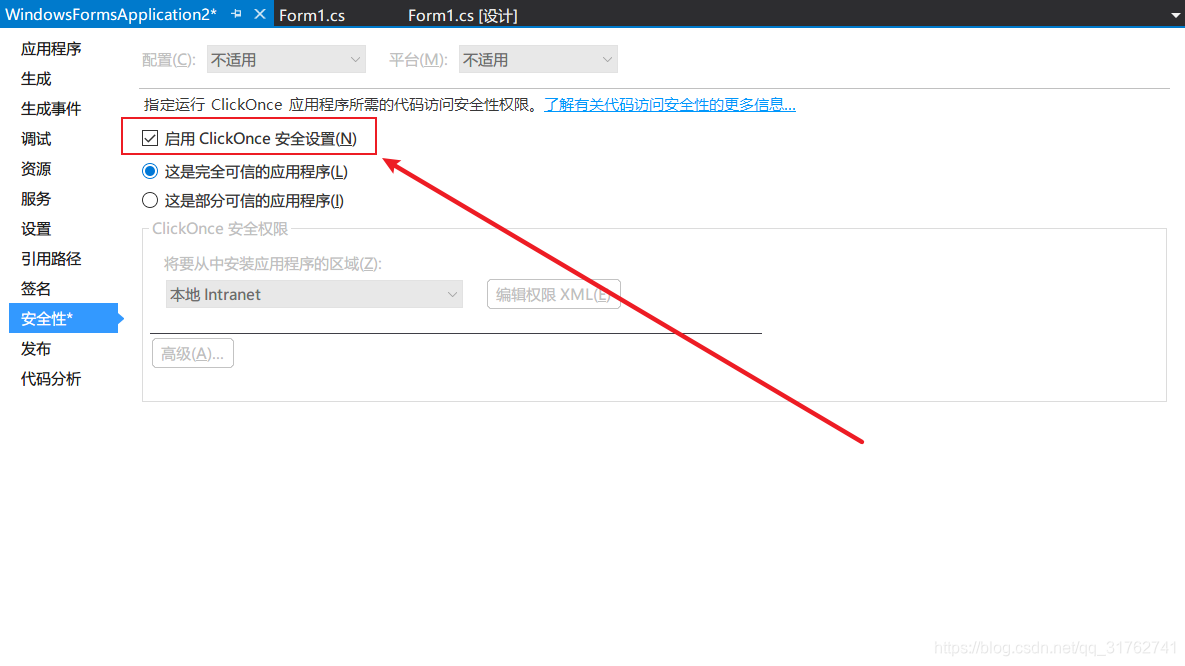C#如何以管理员身份运行程序
本文共 599 字,大约阅读时间需要 1 分钟。
在使用winform程序获取调用cmd命令提示符时,如果是win7以上的操作系统,会需要必须以管理员身份运行才会执行成功,否则无效果或提示错误。 比如在通过winform程序执行cmd命令时,某些情况下如果不是以管理员身份运行,则会提示命令无效。或者通过winform程序执行Windows Service 服务时,也需要以管理员身份才能调用Service服务。
下面讲解一下如何使程序获取管理员权限来运行。
- 在Visual Studio 中–解决方案资源管理器–右键项目名称–属性,找到“安全性”选项

- 勾选“启用ClickOnce安全设置”

- 这时,在项目下面会多出一个“app.manifest”的文件,选中它,并找到代码段
<requestedExecutionLevel level="asInvoker" uiAccess="false" />,将其改为:<requestedExecutionLevel level="requireAdministrator" uiAccess="false" />, 打开
打开 
- 改正后,不要急于重新编译生成,再次打开“属性–安全性”界面, 将“启用ClickOnce安全设置”前面的勾去掉后再编译运行。 不然程序会报错无法运行。

转载地址:http://onex.baihongyu.com/
你可能感兴趣的文章
MySQL高可用切换_(5.9)mysql高可用系列——正常主从切换测试
查看>>
MYSQL高可用集群MHA架构
查看>>
MySQL高级-MySQL并发参数调整
查看>>
MySQL高级-MySQL查询缓存优化
查看>>
MySQL高级-SQL优化步骤
查看>>
MySQL高级-视图
查看>>
MySQL高级-触发器
查看>>
mysql高级查询~分页查询
查看>>
MySQL(2)DDL详解
查看>>
MySQL:MySQL执行一条SQL查询语句的执行过程
查看>>
MySQL:判断逗号分隔的字符串中是否包含某个字符串
查看>>
MySQL:某个ip连接mysql失败次数过多,导致ip锁定
查看>>
Mysql:避免重复的插入数据方法汇总
查看>>
n 叉树后序遍历转换为链表问题的深入探讨
查看>>
nacos config
查看>>
NacosClient客户端搭建,微服务注册进nacos
查看>>
Nacos原理
查看>>
Nacos在双击startup.cmd启动时提示:Unable to start embedded Tomcat
查看>>
Nacos如何实现Raft算法与Raft协议原理详解
查看>>
Nacos安装教程(非常详细)从零基础入门到精通,看完这一篇就够了
查看>>